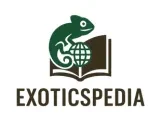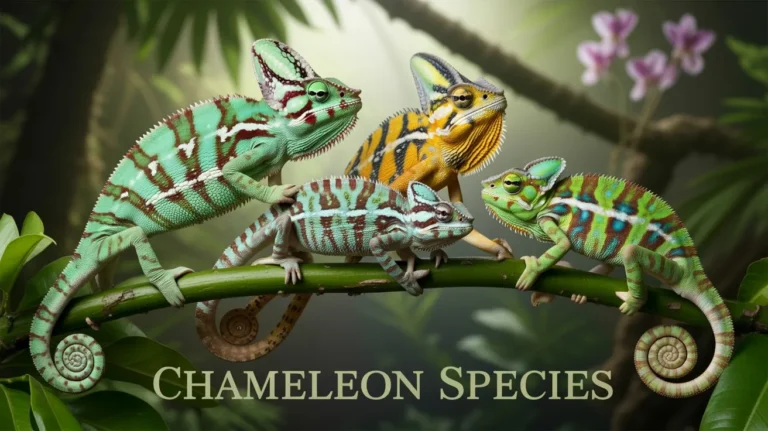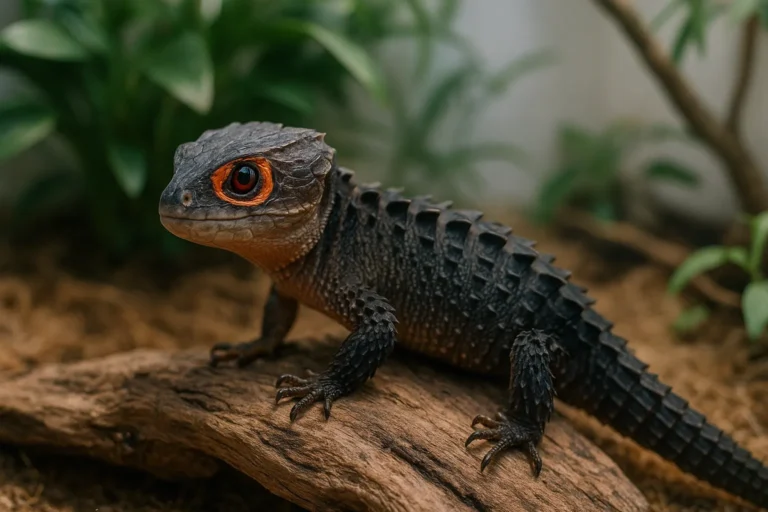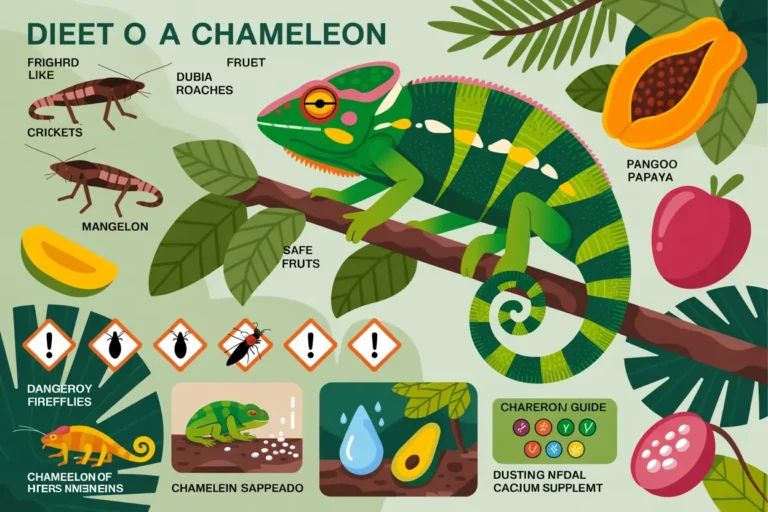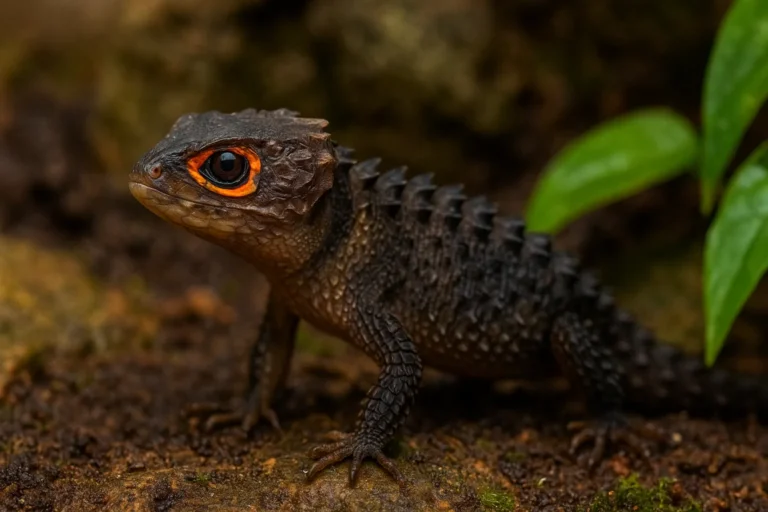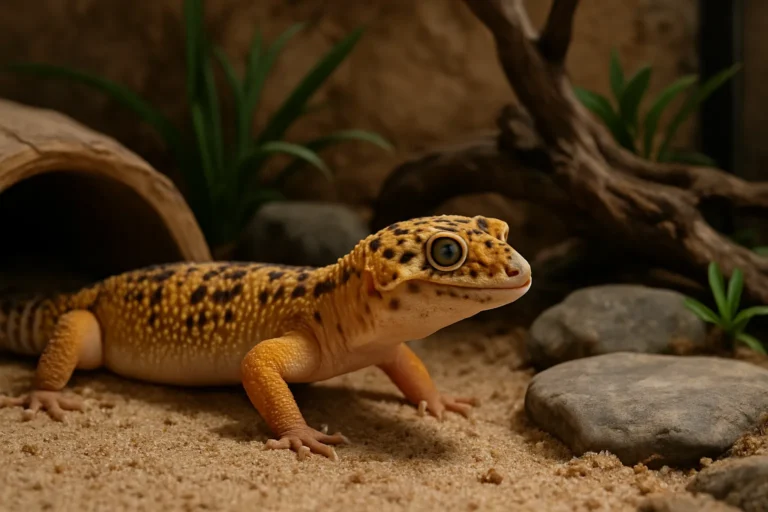Red-Eyed Crocodile Skink Diet: A Complete Feeding Guide
Red-eyed crocodile skinks (Tribolonotus gracilis) are fascinating, crepuscular reptiles known for their dragon-like appearance and shy nature. Originating from the tropical forests of Southeast Asia, their diet plays a crucial role in their health, lifespan, and overall well-being. Whether you’re a new keeper or an experienced reptile enthusiast, understanding what and how to feed them is essential. This comprehensive guide will walk you through everything you need to know about feeding your red-eyed crocodile skink the right way.
Natural Diet of Red-Eyed Crocodile Skinks in the Wild
In their native habitat of New Guinea and Southeast Asian forests, red-eyed crocodile skinks are insectivorous hunters. They forage among leaf litter and mossy crevices, feeding primarily at dawn and dusk (crepuscular behavior). Their wild diet includes:
This diet provides them with high-protein, moisture-rich meals critical to their survival in humid forest ecosystems.
Ideal Captive Diet: What Should You Feed?
In captivity, replicating their natural diet ensures proper nutrition and reduces the risk of disease. Feed them a varied, protein-rich menu of live insects such as:
Always offer prey that is no larger than the space between your skink’s eyes to avoid impaction.
Feeding Frequency by Age
| Age Group | Feeding Frequency | Notes |
|---|---|---|
| Juveniles (0-6 months) | Daily | Higher energy needs during growth |
| Sub-adults (6-12 months) | Every other day | Monitor weight and appetite |
| Adults (12+ months) | Every 2–3 days | Maintain body condition and health |
Occasional fasting days are normal in adults and help maintain a healthy weight.
Supplementation: Calcium, D3, and Multivitamins
Red-eyed crocodile skinks are prone to Metabolic Bone Disease (MBD) if their calcium and vitamin D3 needs aren’t met. Here’s how to supplement properly:
- Calcium with D3: Dust insects every other feeding for adults and daily for juveniles.
- Multivitamin supplement: Use once per week.
- Use reptile-safe powders and follow dosage instructions.
Lack of proper supplementation can lead to deformities, lethargy, and even death over time.
Hydration and Moisture Intake
Though they rarely drink from bowls, hydration is still critical. Their water needs are often met through:
Offer a shallow water dish and maintain 70-90% humidity to support hydration and skin shedding.
Unsafe Foods to Avoid
Not all insects or foods are safe. Avoid the following:
Avoid handling during or right after feeding as it can cause stress or regurgitation.
Sample Feeding Schedule
| Day | Food Item | Supplement |
|---|---|---|
| Monday | Crickets | Calcium + D3 |
| Tuesday | Hornworms | – |
| Wednesday | Superworms | Calcium only |
| Thursday | Earthworms | Multivitamin |
| Friday | Calci worms + roaches | – |
| Saturday | Fasting | – |
| Sunday | Waxworm (treat) + crickets | Calcium + D3 |
Adjust portion sizes based on age, activity level, and weight.
Nutritional Chart for Common Feeder Insects
| Insect | Protein % | Fat % | Calcium : Phosphorus | Hydration Level |
|---|---|---|---|---|
| Crickets | 18–21% | 6% | 1:9 | Moderate |
| Dubia Roaches | 23% | 7% | 1:3 | Moderate |
| Mealworms | 20% | 13% | 1:7 | Low |
| Superworms | 19% | 15% | 1:7 | Low |
| Earthworms | 12% | 1% | 1:1 | High |
| Hornworms | 9% | 3% | 1:3 | Very High |
| Waxworms | 14% | 23% | 1:7 | Low |
| Calci worms | 16% | 5% | 2.5:1 | Moderate |
Note: Balance is key. Don’t rely on any one feeder for extended periods.
Feeding Tips & Mistakes to Avoid
✔ Do
- Gut-load insects 24 hours before feeding
- Monitor your skink’s weight and adjust portions accordingly
- Use feeding tongs for safety and hygiene
- Remove uneaten insects after 15–30 minutes
✘ Don’t
- Overfeed fatty insects like waxworms
- Skip calcium or vitamin supplementation
- Leave live insects roaming in the enclosure overnight
- Feed from the substrate — use a feeding dish or tweezers
Final Thoughts
Feeding your red-eyed crocodile skink a balanced, insect-rich, and well-supplemented diet is essential to their health and longevity. With the right insect variety, portion control, and proper supplementation, you can help your skink thrive in captivity just as it would in the wild.
Proper feeding is more than just nutrition — it’s about recreating their natural behaviors and keeping them mentally and physically stimulated. Monitor your pet closely, adjust as needed, and always prioritize quality over quantity in your feeding routine.
